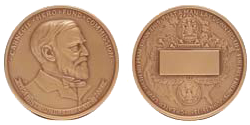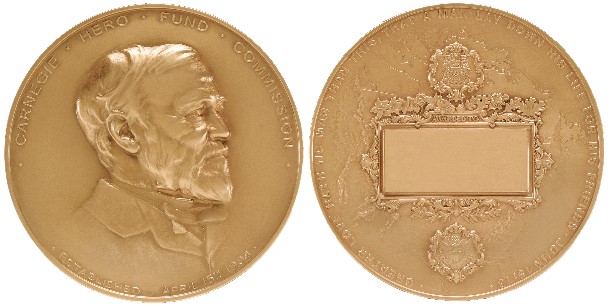The Carnegie Medal is a bronze medallion three inches in diameter and is awarded to civilians who risk death or serious physical injury to an extraordinary degree saving or attempting to save the lives of others.
Andrew Carnegie’s profile in relief dominates the obverse of the medal. The reverse carries as background, in low relief, the outline of the United States and Canada, the Commission’s field of operation, and the seals of the two countries appear in high relief. The reverse of the medal centers on the cartouche, or inscription plate, which carries an embossed statement naming the rescuer, the rescued, and the place and date of the heroic act.
The cartouche is adorned with laurel, ivy, oak, and thistle, respectively signifying glory, friendship, strength, and persistence – the attributes of a hero. A verse from the New Testament encircles the outer edge: “Greater love hath no man than this, that a man lay down his life for his friends” (John 15:13).





